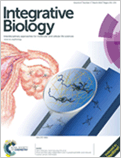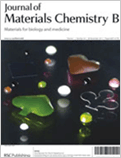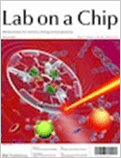













[146] Advanced Science, 12 (13), 2410659 (2025)
ODSEI Chip: An Open 3D Microfluidic Platform for Studying Tumor Spheroid-Endothelial Interactions
Jooyoung Ro, Junyoung Kim, Juhee Park, Yongjun Choi and Yoon-Kyoung Cho*
Current in vitro models of 3D tumor spheroids lack functional vasculature, limiting their utility in studying tumor progression and drug responses. This study introduces the ODSEI chip, a novel open 3D-microarray platform that arrays over 1,000 tumor spheroids atop vasculature, enabling single-spheroid-level drug resistance analysis and extraction for further study. Using this platform, the crosstalk between breast cancer spheroids and vasculature revealed that endothelial cells contribute to acquired tamoxifen resistance. Single-cell RNA sequencing and protein arrays identified key pathways (TNF-α via NF-κB and mTOR) and cytokines (IL-8, TIMP1) driving resistance. Targeting these cytokines successfully reversed tamoxifen resistance, highlighting the ODSEI chip’s potential to advance tumor biology research and therapeutic development.
[145] Microsystems & Nanoengineering, 11 (1), 38 (2025)
Nanoplasmonic SERS on Fidget Spinner for Digital Bacterial Identification
Mamata Karmacharya, Issac Michael, Jiyun Han, Elizabeth Maria Clarissa, Oleksandra Gulenko, Sumit Kumar, Yoon-Kyoung Cho*
Raman spectroscopy provides sensitive, non-destructive molecular insights into bacteria but faces challenges with accuracy and reproducibility. This study presents a novel diagnostic tool, the plasmonic fidget spinner (P-FS), combining a nanoplasmonic-enhanced membrane substrate with a customized fidget spinner for simultaneous bacterial filtration and detection. Using photolithography, a plasmonic microarray is patterned on a nitrocellulose membrane integrated into the P-FS. Tests with various bacterial species demonstrated enhanced sensitivity through nanoplasmonic hotspots, enabling precise identification via unique Raman fingerprints. Machine learning transforms SERS intensity mappings into digital signals for bacterial identification and quantification. This scalable technology offers a promising platform for ultrasensitive bacterial detection and broader analyte analysis.
[144] Journal of Proteome Research, 24, 2, 861–870 (2025)
Size-Dependent Separation of Extracellular Vesicle Subtypes with Exodisc Enabling Proteomic Analysis in Prostate Cancer
Hyun-Kyung Woo, Hee-Sung Ahn, Juhee Park, Jonghoon Bae, Bokyung Kim, Jiyoung Yu, Jeong Kon Seo, Kyunggon Kim, Yoon-Kyoung Cho
We developed Exodisc, a microfluidic device that separates extracellular vesicles by size for prostate cancer diagnostics. The technology isolates small (20-200nm) and large (>200nm) EVs, enabling proteomic analysis of prostate cancer cell lines LNCaP and PC3.
Key findings show EV proteins reflect parental cell characteristics more than size, with large EVs showing increased PSMA-correlated proteins. This addresses current limitations in EV isolation and characterization methods.
The technology advances liquid biopsy applications for cancer diagnosis, offering non-invasive alternatives to tissue-based diagnostics. This enables improved biomarker discovery and supports development of personalized cancer treatments through precise EV subtype isolation.
[143] ACS Nano 19 (5), 5526-5538 (2025)
Digital Profiling of Tumor Extracellular Vesicle-associated RNAs Directly from Unprocessed Blood Plasma
Elizabeth Maria Clarissa, Sumit Kumar, Juhee Park, Mamata Karmacharya, In-Jae Oh, Mi-Hyun Kim, Jeong-Seon Ryu, Yoon-Kyoung Cho
Tumor-derived extracellular vesicle (tEV)-associated RNAs are promising diagnostic biomarkers, but their clinical use is limited by the rarity of tEVs. EV-CLIP, a sensitive droplet-based digital method, addresses this by profiling EV RNA through fusion with charged liposomes (CLIPs) on a microfluidic chip. This method offers high sensitivity and selectivity for EV-derived miRNAs and mRNAs using minimal plasma volume (20 µL), without prior EV isolation or RNA preparation. In a study of 83 patient samples, EV-CLIP detected EGFR mutations with high accuracy, and its effectiveness in serial monitoring during chemotherapy underscores its potential for precise quantification of rare EV subpopulations, aiding in the exploration of single EV RNA content and understanding diverse EV populations in various diseases.
[142] Small, 2409353 (2025)
Nature Inspired Delivery Vehicles for CRISPR-Based Genome Editing
Elizabeth Maria Clarissa, Mamata Karmacharya, Hyunmin Choi, Sumit Kumar, Yoon-Kyoung Cho
Clustered Regularly Interspaced Short Palindromic Repeats (CRISPR)-based genome editing technologies have revolutionized treatment possibilities for genetic disorders. However, their effectiveness hinges on developing safe and efficient delivery methods. Natural and synthetic nanocarriers—like viral vectors, extracellular vesicles (EVs), liposomes, and nanoparticles—are key. These carriers enhance CRISPR's precision and reduce immune responses. Liposomes and nanoparticles offer reproducible delivery with customizable features. Viral vectors, known for high efficiency, deliver CRISPR components broadly. EVs, as natural carriers, ensure stealth delivery, minimizing off-target effects. Engineered cellular membrane particles simulate cells, enhancing uptake and reducing immune reactions. This review explores these nanocarrier advancements, highlighting their application in therapeutic genome editing and future prospects.
Invited review
[141] Langmuir, 40, 49, 25772–25784 (2024)
Microfluidic Dielectrophoretic Purification of Extracellular Vesicles from Plasma Lipoproteins
Jonathan Sabaté del Río, Yeonzu Son, Juhee Park, Vijaya Sunkara, Yoon-Kyoung Cho
Extracellular vesicles (EVs) are lipid vesicles involved in cell-to-cell communication and hold significant potential as biomarkers for liquid biopsies in disease screening and monitoring. However, plasma lipoproteins (LPs), which share similar characteristics and outnumber EVs, hinder accurate EV analysis. This study introduces a two-step EV isolation method using a lab-on-a-chip device. The process begins with size-based filtration via a lab-on-a-disc system to collect EVs and LPs, followed by dielectrophoretic (DEP) purification using slanted interdigitated microelectrodes. At 10 kHz, DEP forces separate EVs from LPs efficiently, directing EVs to the collection outlet while removing LPs as waste. This integrated approach significantly improves the purity and reliability of EV-based liquid biopsies.
[140] BIomicrofluidics, 18 (5) 051504 (2024)
Vascularized platforms for investigating cell communication via extracellular vesicles
Junyoung Kim, Jooyoung Ro, Yoon-Kyoung Cho
The vascular system is crucial for organ health through oxygen and nutrient delivery, as well as facilitating communication via signaling molecules and drug transport. Engineers work to recreate these systems, focusing on cellular interactions and environmental conditions. Extracellular vesicles (EVs) are emerging as important carriers of proteins and genetic material between cells, and vascularized platforms provide ideal systems to study how EVs interact with blood vessels. This research advances our understanding of EV-mediated processes and supports the development of EV-based treatments.
[139] Small, 20(38):e2311071 (2024)
The Role of Extracellular Vesicles in the Treatment of Prostate Cancer
Cong Hu, Qi Chen, Tianyang Wu, Xinxing Du, Yanhao Dong, Zehong Peng, Wei Xue, Vijaya Sunkara*, Yoon‐Kyoung Cho*, Liang Dong*
Prostate cancer (PCa) is a growing public health concern among elderly men, with current treatments often failing to provide long-lasting responses, especially in advanced cases. Extracellular vesicles (EVs), which carry various biomolecules, have shown significant potential in diagnostics and therapeutics over the past decade. EV-based liquid biopsies offer non-invasive biomarkers for guiding treatment decisions and staging patients. They also play critical roles in tumor progression processes like proliferation, metastasis, and drug resistance. Furthermore, EVs are promising drug carriers, with both natural and engineered EVs facilitating new treatment modalities. This review highlights recent advancements in EV therapies and their potential as innovative interventions for PCa.
Invited reivew
[138] Cancer Science, 115, 5, 1602-1610 (2024)
Alix‐normalized exosomal programmed death‐ligand 1 analysis in urine enables precision monitoring of urothelial cancer
Hyun‐Kyung Woo, Juhee Park, Kyung Hwan Kim, Ja Yoon Ku, Hong Koo Ha, Yoon‐Kyoung Cho
Anti-PD-L1 antibody therapies are effective for metastatic urothelial cancer with high PD-L1 expression. Urinary exosomes are promising biomarkers, but urine variability requires normalization for accurate analysis. This study proposes using the PD-L1/Alix ratio for normalization, as Alix is less affected by heterogeneity. EVs were isolated with ExoDisc and analyzed using ExoView and on-disc ELISA. In 15 urothelial cancer patients, the Alix signal was consistent, while tetraspanin intensity varied. On-disc ELISA outperformed standard plate ELISA in detecting exosomal PD-L1. Normalizing PD-L1 with Alix offers a reliable method for monitoring patient status and detecting exosomal PD-L1 in urine samples.
[137] Lab Chip, 24, 1541-1541 (2024)
The evolution of miniaturization, automation, and integration – a new scope for Lab on a Chip
Aaron Wheeler, Jean-Christophe Baret, Yoon-Kyoung Cho, Amy Herr, Xingyu Jiang, Séverine Le Gac, Hang Lu, Manabu Tokeshi, Hongkai Wu, Rebecca Garton, Alice Smallwood, David Lake, Harpal Minhas
... Today, Lab on a Chip has transformed into a unique forum for multidisciplinary work where miniaturization, automation and integration demonstrate a profound impact across diverse fields and has become the journal to publish work in this area relating to biology, medicine, materials science, environmental monitoring, energy, and so much more. Microfluidic, nanofluidic and miniaturized systems now span a long list of disciplines, and our community encompasses more researchers than ever before, including engineers, chemists, biologists, biomedical scientists, physicists, materials scientists, and many others across academia, industry, and clinical practices....
[136] Journal of extracellular vesicles 13 (2), e12404 (2024)
Minimal information for studies of extracellular vesicles (MISEV2023): From basic to advanced approaches
Extracellular vesicles (EVs), through their complex cargo, can reflect the state of their cell of origin and change the functions and phenotypes of other cells. These features indicate strong biomarker and therapeutic potential and have generated broad interest, as evidenced by the steady year‐on‐year increase in the numbers of scientific publications about EVs. Important advances have been made in EV metrology and in understanding and applying EV biology. However, hurdles remain to realising the potential of EVs in domains ranging from basic biology to clinical applications due to challenges in EV nomenclature, separation from non‐vesicular extracellular particles, characterisation and functional studies. To address the challenges and opportunities in this rapidly evolving field, the International Society for Extracellular Vesicles (ISEV) updates its ‘Minimal Information for Studies of Extracellular Vesicles’,...
[135] Lab Chip, 24, 2069-2079 (2024)
Tonicity-induced cargo loading into extracellular vesicles
Chaeeun Lee‡, Sumit Kumar‡, Juhee Park, Yongjun Choi, Elizabeth Maria Clarissa, and Yoon-Kyoung Cho*
A key challenge in using extracellular vesicles (EVs) for drug delivery is controlling membrane permeability without compromising their integrity. A new method, utilizing tonicity control (TC) on a lab-on-a-disc platform, addresses this by using a hypotonic solution to temporarily permeabilize the EV membrane for cargo loading, followed by isotonic washing to reseal it. This technique effectively loads various cargos, such as doxorubicin, ssDNA, and miRNA, with significantly higher yields than traditional methods like sonication or extrusion. Intracellular assessments of miRNA-497 and doxorubicin-loaded EVs confirmed the superior performance of TC-prepared EVs, highlighting their potential for developing novel exosome-based therapeutic systems for clinical applications.
[134] ACS Appl. Mater. Interfaces, 15, 49, 56807–56819 (2023)
Exosome Precipitation by Ionic Strength Modulation: ExoPRISM
Vijaya Sunkara, Juhee Park, Jiyun Han, Jonathan Sabaté Del Río, Hyun-Ju Cho, In-Jae Oh, Yoon-Kyoung Cho*
Here, we present EV precipitation by ionic strength modulation (ExoPRISM), a simple, low-cost, user-friendly, and readily adaptable approach for separating EVs in high yields without compromising their biological functions. Adding an electrolyte solution to blood plasma in small increments generates the sequential precipitation of proteins and EVs, allowing for fractional separation of EVs using low-speed centrifugation. The coprecipitated electrolytes are easily washed away, and the entire EV separation and washing process takes less than an hour. This approach successfully separates EVs from a broad range of volumes and types of biological fluids, including culture medium, urine, plasma, and serum, showing promise as a robust tool for next-generation liquid biopsies and regenerative medicine.
[133] Advanced Healthcare Materials, 13(2), 2302121 (2023)
Platelet Membrane-Enclosed Bioorthogonal Catalysis for Combating Dental Caries
Mamata Karmacharya, Sumit Kumar,* Yoon Jeong Choi, Yoon-Kyoung Cho*
"bind and kill" strategy utilizing a biologically interfaced nanoreactor with platelet membrane-coated surfaces is introduced for synthesizing an antimicrobial drug through biorthogonal chemistry. The nanoreactor exploits the diverse functional proteins found in human platelets, enabling selective binding to a broad range of bacteria and effectively eliminate pathogenic biofilms formed on human teeth while maintaining excellent biocompatibility.
[132] Neoplasia, 42, 100906 (2023)
Nuclear morphology predicts cell survival to cisplatin chemotherapy
Chi-Ju Kim*, Anna LK Gonye, Kevin Truskowski, Cheng-Fan Lee, Yoon-Kyoung Cho, Robert H Austin, Kenneth J Pienta, Sarah R Amend*
Chemotherapy resistance is a major factor contributing to cancer-related deaths. While researchers have studied the molecular mechanisms of resistance, less is known about the cell biology of cancer cells surviving chemotherapy. Here, we focus on prostate cancer cells treated with cisplatin and found that surviving cells grew larger, had larger nuclei, and employed efficient DNA damage repair. These cells also exhibited distinct nucleolar features and increased ribosomal RNA levels. This suggests that after chemotherapy, most cells with severe DNA damage die, while a minority adapt to a pro-survival state known as the polyaneuploid cancer cell (PACC) state. Understanding these characteristics is crucial for combating cancer resistance and recurrence.
- 1000Page 3


















